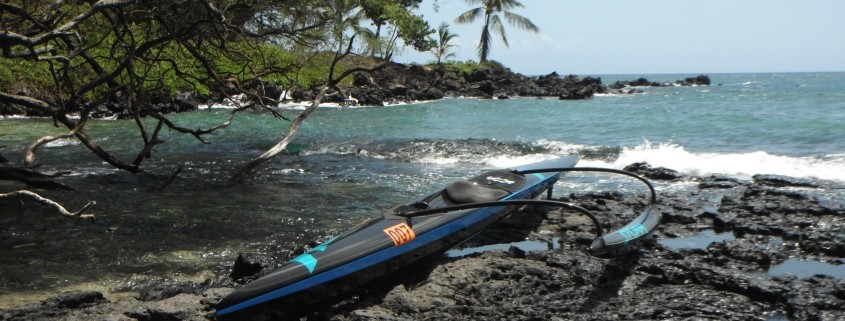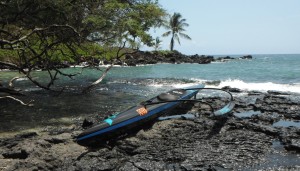Two months on the Storm
Back in March, about a week before the Olamau race, we got the first batch of Storms in Hawaii. I spent most of April and May paddling the Storm on Maliko, Keanae, and Napili runs. As the designer, I tend to scrutinize every detail, but after two months of paddling I wouldn’t change a thing.
I was immediately impressed with the maneuverability of the canoe. It was a lot quicker than the prototype, despite the similar hull shape. I didn’t anticipate the impact the reduced weight of the canoe would have on the responsiveness. The lighter hull (15.5lbs) has a lot less inertia so it reacts quickly. When the surf is hard to anticipate, this lets you make last second course changes and accelerate faster.
The canoe comes alive in the surf. As soon as the nose drops the canoe really hits it’s stride. The canoe is designed to be efficient at higher speeds, so it wants to stay on the bumps. It took me a while to get used to the idea that I didn’t need to do much to keep it in the sweet spot on a wave. I could go faster with a lot less effort than I’m used to. I had to reign myself in to keep from running away from the wave.
All that restraint left me looking for opportunities to expend some of that energy. After 20 years of feeling like I knew all there was to know about how to surf an OC-1, I am constantly surprised with the new things I can do with this boat.
Initially I found the ultra-lightweight ama a bit challenging, but after a few runs your mind re-calibrates you stop thinking about it. Well, except when you pick it up, which always surprises me.
Comfort is subjective, every paddler is built differently, but we put a lot of energy into the cockpit design. The Hurricane had low marks for comfort, so we were focused on improvement. The larger footpedals are ergometric with an arch support and move the way your foot does. The cockpit is wider than the norm to give adequate padding without pinching.
The construction is a real breakthrough. Despite being a high volume canoe, at 15.5 pounds for the hull, a pound for the iakos, and 2.25 for the ama, this is by far the lightest canoe on the market. We didn’t achieve this weight by using less carbon, less reinforcements, or a thinner core material. In fact, we use close to double the amount of carbon in the Storm as some of our competitors use in their ultralight constructions. It’s by using more carbon, and less stainless steel, and less fiberglass, and less resin, and less putty, and less paint that we can get the weight so low. We also use high density corecell instead of coremat for greater stiffness.
People will certainly question the durability when they pick up the canoe for the first time. How can something so light possibly be durable? The truth is that we are using the same laminate that we have been using in our OC-1s for the last 6 years. We’ve just eliminated the seam, reduced the amount of paint, and substituted carbon fiber for weaker materials whenever possible. This is the strongest canoe we’ve ever built.
Note: When you compare the weight of canoes from different manufacturers be sure it’s apples to apples. Some will tell you the weight of the hull without the seat, rudder, and footpedals which can add a couple of pounds.
The one piece construction also means greater integrity. We’ve been building canoes for 20 years, and the seams are always the first thing to fail when things go wrong. So that’s gone. We love this technology so much we are migrating everything we make to one-piece. The Kai wa’a ama, and Tempest ama have already been re-tooled for this process.
We’ve also stepped up our graphics capabilities. We’ve dropped using vinyl decals and are doing our logos and graphics using a basecoat/clearcoat system.




